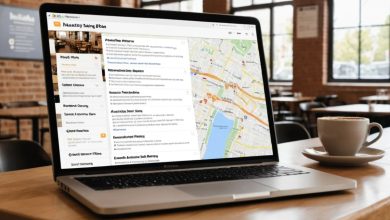Speed Networking Tips for Efficient Professional Connections
Speed networking events offer a unique opportunity to meet a large number of professionals in a short period. Instead of exchanging small talk endlessly, these structured sessions force participants to introduce themselves succinctly, focus on high-value exchanges, and maximize each interaction. Whether you’re an introvert seeking efficient ways to build your network or a seasoned professional aiming to generate new leads, mastering speed networking can transform how you forge connections. In this article, you will learn how to prepare, execute, and follow up on speed networking events with targeted strategies that boost your confidence and productivity.
Understanding Speed Networking
What Is Speed Networking?
Speed networking is a structured format where participants engage in rapid-fire, one-on-one or small-group conversations, each lasting a few minutes. The goal is to introduce yourself, identify shared interests or opportunities, and then move on to the next person before diving into lengthy discussions. Key characteristics include:
-
Timed Conversations: Typically 3–5 minutes per interaction, ensuring everyone gets a chance to meet multiple contacts.
-
Focus on Clarity: Participants must communicate their value proposition and objectives quickly.
-
High Contact Volume: Instead of lingering on one conversation, you meet numerous professionals and sort out follow-up opportunities later.
-
Equal Opportunity: Every attendee receives the same amount of time, eliminating hierarchy and encouraging open dialogue.
Why Speed Networking Works for Busy Professionals
In a world where time is a scarce resource, speed networking delivers several advantages:
-
Maximized Reach: You meet more people in an hour than you would at a typical networking event.
-
Elevator-Pitch Discipline: The format forces you to refine your introduction until it’s concise and impactful.
-
Reduced Small-Talk: Questions are tailored to uncover value quickly, bypassing idle chitchat and focusing on potential collaboration.
-
Level Playing Field: Whether you’re a CEO or a graduate student, everyone gets equal airtime, making it easier for newcomers to approach established professionals.
Identifying Your Speed Networking Goals
Before attending, define clear objectives to ensure every conversation adds value:
-
Outline Desired Outcomes: Consider whether you want job leads, collaboration partners, or simply insight into industry trends.
-
Set Quantitative Targets: Agree with yourself to have, for example, three promising conversations per event rather than focusing on sheer volume.
-
Clarify Your Value Proposition: Decide how you will articulate what you offer—whether it’s expertise, connections, or unique products—within a 30-second window.
By setting these goals in advance, you can approach each interaction with purpose, avoiding aimless chatter and maximizing your return on investment.
Preparing for Speed Networking Events
Researching the Event Format and Attendee Profile
Effective preparation begins with knowledge of the event’s structure and participants:
-
Obtain the Attendee List (If Available): Note attendees’ companies, job titles, and mutual interests to prioritize who you want to meet.
-
Understand Timing: Confirm whether you’ll have three or five minutes per person, and if there’s a one-minute transition between conversations.
-
Identify Key Personas: Highlight three to five profiles—perhaps decision-makers or people in your dream companies—so you can tailor your pitch accordingly.
When you know who you’re likely to meet and how much time you’ll have, you can tailor your introduction and questions for maximum impact.
Crafting an Elevator Pitch That Converts
Your elevator pitch must clearly communicate who you are, what value you bring, and what you’re seeking:
-
Who You Are: Introduce yourself with your role and industry, for example, “I’m Samantha Lee, a digital marketing strategist specializing in B2B lead generation.”
-
What You Do: Highlight a key achievement or core skill: “Last year, I helped a SaaS startup increase qualified leads by 60% using targeted content campaigns.”
-
What You Seek: State your objective, such as, “I’m looking to connect with product managers who need data-driven marketing support.”
Tutorial:
-
Draft a 30-Second Script: Write down the three components in a seamless paragraph.
-
Practice Under Timing Constraints: Use a stopwatch to ensure you finish in 30–45 seconds.
-
Refine Through Feedback: Record yourself or practice with a colleague, paying attention to clarity and pacing. Adjust until your pitch flows naturally.
Preparing Conversation Starters and High-Impact Questions
Beyond your pitch, you need questions that quickly uncover shared priorities:
-
Industry Trends: “How is your company adapting to the latest AI-driven marketing tools?”
-
Personal Connection: “What brought you to this event? Are you exploring new partnerships or seeking talent?”
-
Value Exchange: “What challenge are you facing right now that I might help solve with my expertise in lead-gen analytics?”
Tutorial:
-
Draft 3–5 Open-Ended Questions: Focus on recent news, shared industry pain points, or mutual goals.
-
Memorize Key Facts About Priority Contacts: Having one or two facts shows you’ve done your homework.
-
Practice Shifting Quickly: Role-play with a partner, moving from an icebreaker to a direct question within 10–15 seconds.
These starters ensure that once you’ve delivered your pitch, you can engage in a meaningful exchange rather than leaving awkward silences.
Executing Effective Speed Networking
Mastering Nonverbal Communication
Your posture, eye contact, and overall presence reinforce credibility:
-
Eye Contact: Maintain steady, natural eye contact—on virtual platforms, look at the camera rather than the screen.
-
Confident Posture: Stand or sit tall with shoulders back, whether in person or on video.
-
Facial Expressions: Smile genuinely to convey warmth and approachability.
Tutorial:
-
Warm-Up Exercises: Ten minutes before the event, do simple posture drills—stand against a wall to align your spine.
-
Camera Check: For virtual events, position your camera at eye level and test lighting to avoid shadows.
-
Active Listening Cues: Nod and use facial expressions to show engagement even when you’re not speaking.
Effective nonverbal signals help listeners feel seen and heard, building trust quickly in brief conversations.
Active Listening and Value Delivery
Speed networking shouldn’t feel like racing through scripted lines. Focus on genuine engagement:
-
The Elevator Echo Technique:
-
Paraphrase Key Points: “So, you’re exploring new markets in Europe this year?”
-
Offer Relevant Insight: “I recently led a campaign that doubled sales in the UK. One tip is to localize your content for cultural relevance.”
-
Ask a Mini Follow-Up: “Would you find it helpful if I shared a case study on that project?”
-
Example Conversation Flow:
-
0:00–0:10: Greet with your elevator pitch.
-
0:10–0:20: Ask a targeted question: “What’s your biggest challenge in expanding into new regions?”
-
0:20–0:30: Share one actionable resource or insight, and conclude with an offer to send more detailed information.
By blending attentive listening with quick value delivery, you create memorable exchanges even within time constraints.
Transitioning Between Conversations Smoothly
At the end of each timed slot, you need a graceful exit to prepare for the next person:
-
Timed Cues: Keep a discreet watch or a timer app to know when 10 seconds remain.
-
Closing Line: Use a concise statement like, “Thank you for your insights—let’s follow up soon.”
-
Exchange Details Quickly: Hand over a business card or share your LinkedIn QR code within the final 5–10 seconds.
Tutorial:
-
Time-Warning Cue: Practice glancing at a watch or phone without breaking eye contact to indicate you’re aware of the time.
-
Refined Closing: Develop a one-sentence closing that encapsulates gratitude and a clear next step suggestion.
-
Maintain Flow: Even when you stand to move on, keep your shoulders relaxed and maintain positive body language to avoid abruptness.
A smooth transition leaves a positive last impression and sets the stage for follow-up outside the event.
Maximizing Post-Event Follow-Up
Crafting Personalized Follow-Up Messages
Your initial outreach sets the tone for continued engagement:
-
Personal Greeting: Use their name accurately—no generic “Hello.”
-
Context Reminder: “It was great chatting with you at [Event Name] about international expansion strategies.”
-
Value Offer: Share a piece of content you promised, like an article or case study.
-
Clear Next Step: Suggest a brief call or meeting: “Would you be open to a 15-minute call next week to dive deeper?”
Tutorial:
-
Draft Templates for Common Scenarios: Create different email structures: one for resource sharing, another for scheduling a meeting, and a third for collaborative proposals.
-
Customize Every Message: Spend three to four sentences referencing your specific conversation point—avoid generic follow-ups.
-
Set a Follow-Up Cadence: Use a CRM or calendar reminders to send your first follow-up within 24–48 hours. If no response arrives in one week, send a polite reminder.
Organizing Contacts and Tracking Outcomes
To convert fleeting conversations into lasting connections, keep meticulous notes:
-
Create a Spreadsheet: Include columns for Name, Company, Role, Date Met, Key Takeaway, Next Action, and Follow-Up Date.
-
Assign Immediate Next Actions: Tag each contact as needing an email, LinkedIn request, or proposal based on your conversation.
-
Review Weekly: Update statuses—“Replied,” “Meeting Scheduled,” “No Response”—and adjust outreach efforts accordingly.
A well-maintained tracking system ensures you don’t lose momentum or miss opportunities that emerged from those 3–5 minute chats.
Measuring Networking ROI
Determine the effectiveness of your speed networking strategy by monitoring these metrics:
-
Follow-Up Response Rate: Percentage of contacts who reply within one week.
-
Meetings Scheduled: Number of calls or in-person meetings set up as a result of follow-ups.
-
Opportunities Generated: Job leads, partnerships, or client referrals directly attributable to the event.
-
Conversion Rate: Successful outcomes divided by total contacts made—for example, 5 new clients from 50 connections equals a 10% conversion rate.
Tutorial:
-
Set Quarterly Goals: Aim to convert a specific percentage of your contacts into measurable outcomes—say, 10%.
-
Analyze Trends: Identify which questions or insights led to the highest response rates and refine your pitch accordingly.
-
Adjust Strategies: If LinkedIn messages outperform email follow-ups, shift your focus to the more effective channel.
Measuring these indicators helps you optimize your approach, ensuring each event yields maximum value.
Comparing Speed Networking vs Traditional Networking
Pros and Cons Comparison
| Method | Pros | Cons | Ideal Scenario |
|---|---|---|---|
| Speed Networking | Rapid introductions, focused time, high contact volume | Limited depth per interaction, can feel rushed | Large industry events with strict time constraints |
| Traditional Networking | Deeper conversations, organic connections develop naturally | Time-consuming, risk of spending time on low-value leads | Smaller meetups or informal gatherings where depth matters |
While traditional networking allows for more thorough discussions, speed networking’s efficiency makes it perfect for busy professionals who want to meet many potential collaborators in a structured setting.
Speed Networking in Virtual vs In-Person Settings
Virtual Speed Networking Tips
Virtual events require additional technical and etiquette considerations:
-
Optimize Your Environment: Choose a quiet space with a neutral background and reliable internet to avoid disruptions.
-
Use Headphones with Microphone: Enhances audio clarity and reduces background noise, ensuring you’re heard clearly.
-
Engage Actively in Chat: Share concise resources or links when appropriate to deepen value during or after each session.
Tutorial:
-
Familiarize Yourself with the Platform: Test breakout room transitions, chat functions, and screen-sharing features before the event.
-
Mute/Unmute Etiquette: Keep your mic muted until it’s your turn to speak to minimize feedback or unintended interruptions.
-
Virtual Dress Code: Dress as you would for an in-person event—professional attire conveys respect and builds credibility.
In-Person Speed Networking Tips
Face-to-face events rely heavily on personal presence and physical readiness:
-
Arrive Early: Secure a strategic spot (near the entrance or facilitator) to warm up and observe event dynamics.
-
Carry Quality Business Cards: A tangible card makes leaving a lasting impression simpler than relying solely on digital exchanges.
-
Leverage Body Language: Maintain an open posture—uncrossed arms, shoulders back, and a slight forward lean to show engagement.
Tutorial:
-
Map Out the Room Layout: Identify priority tables or sections where your target contacts are likely to be stationed.
-
Time Management: Use a discreet watch to track the final 10 seconds of each conversation and prepare your closing line.
-
Take Quick Notes: Jot down one or two keywords on the back of each business card you receive to remember conversation highlights later.
By paying attention to these in-person nuances, you ensure a polished and confident presence that stands out among a sea of attendees.
Frequently Asked Questions (FAQs)
How Can I Make a Strong Impression in 3–5 Minutes?
Focus on a well-rehearsed elevator pitch that clearly communicates your role, a recent achievement, and what you’re seeking. Follow up with one open-ended question that invites meaningful dialogue, then share a concise, actionable resource or insight before the time is up.
How Do I Follow Up After a Speed Networking Event?
Send personalized messages within 24–48 hours, referencing a specific detail from your conversation (for example, “Thank you for sharing your experiences in virtual event management at [Event Name]; here’s the event toolkit I mentioned”). Include a clear next step, such as scheduling a brief call to explore collaboration further.
What Are the Best Questions to Ask During Speed Networking?
Use open-ended, high-value questions such as:
-
“What challenges is your team facing this quarter?”
-
“Which industry trend are you most excited about right now?”
-
“How can I support your current priorities with my expertise?”
These questions demonstrate genuine interest and uncover opportunities for collaboration.
How Should Introverts Approach Speed Networking?
Prepare a concise script and rehearse it until you feel comfortable. Emphasize active listening—ask follow-up questions instead of monologues. Seek smaller breakout sessions or request to exchange contact details for a more in-depth conversation later. Reflect on each interaction to build confidence over time.
Conclusion
Speed networking events, when executed with intention and preparation, can yield high-value professional connections in a fraction of the time required by traditional networking. By understanding the format, crafting a concise elevator pitch, and practicing active listening, you position yourself to make each brief interaction count. Post-event, personalized follow-ups and systematic tracking transform fleeting conversations into meaningful relationships. Whether virtual or in-person, mastering these strategies ensures that every connection has the potential to spark new opportunities, collaborations, and career growth. Implement these speed networking tips consistently and watch your professional network flourish.
Published on: 4 de June de 2025








